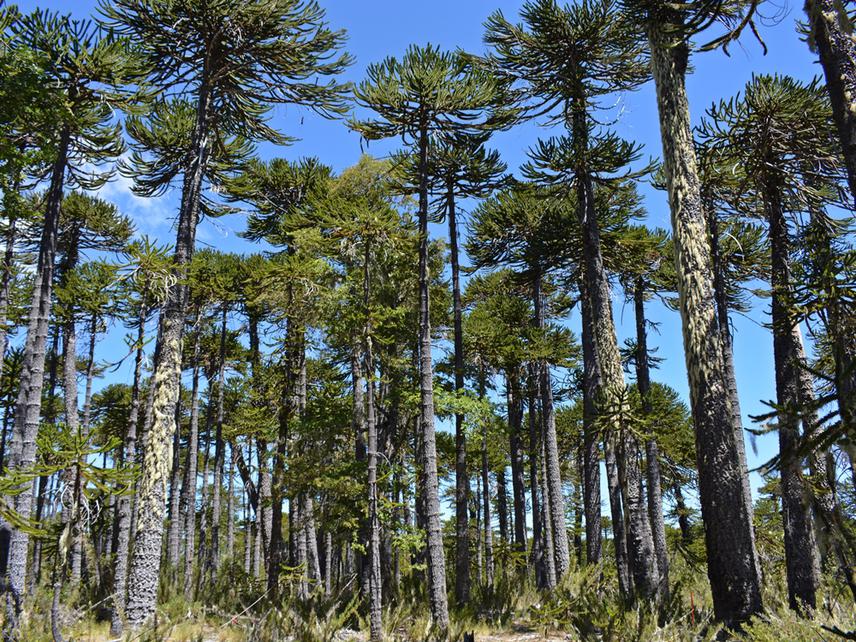Camila Molina González
This project will focus on evaluating the influence of cattle on the conservation of Araucaria araucana in the north of the Nahuelbuta mountain range, south center of Chile. The project aims to define the ecological threshold to integrate the subsistence activities of rural communities and the conservation of an endangered species. The approach of the ecological thresholds would allow to define the development of productive practices that do not compromise the regeneration of the araucaria and the biodiversity. Determining these thresholds would contribute to cattle regulation and can be used as a tool for sustainable forest management.

Araucaria Forest in Nahuelbuta.
Araucaria araucana (Mol.) K Koch, called araucaria or pehuen (indigenous name), is an evergreen conifer endemic to the temperate forests of Chile and Argentina. Its distribution in the coastal zone of Chile restricts its presence to the Nahuelbuta mountain range. It is a species with a high conservation value for the ecological services it provides and forms landscapes of great scenic beauty, which represents a great relevance for tourist or recreational interests. In turn, it has great cultural importance for the Pehuenche indigenous peoples, and is valued for its edible seeds (pine nuts). It is classified as Endangered by the IUCN and by the Ministry of the Environment of Chile.
The Nahuelbuta mountain range is an area of high level of endemism and biodiversity, which is threatened by various anthropic activities. One of them is livestock, a practice that has not been separated from forests and protected areas, as it is a way of subsistence for many peasant families in rural areas of Chile. Cattle alter forest dynamics, negatively affecting regeneration and, consequently, the richness and abundance of plants.
The objective of this project is to evaluate the influence of livestock on the conservation of the araucaria, defining the ecological threshold to integrate the subsistence activities of rural communities and the conservation of this threatened species. The project will be carried out within the Nahuelbuta National Park and also in the fields of small rural owners. The effect of these practices on the regeneration of the araucaria and on the richness of the plants will be studied, and the data will be analysed through predictive models and ecological thresholds. Interviews will also be conducted to identify the main needs and interests of the Livelihoods System Approach (LSA).
Based on these results, a proposal will be designed in conjunction with the actors involved, to integrate the local needs and the conservation of the araucaria for sustainable subsistence activities.